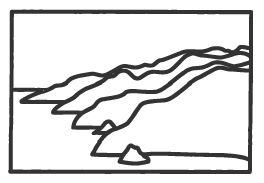Green New Deal Goals
Green New Deal Goals
In short form, here are the goals of the actual Green New Deal document – House Resolution 109:
(A) building resiliency against climate change-related disasters, such as extreme weather, including by leveraging funding and providing investments for community-defined projects and strategies;
(B) repairing and upgrading the infrastructure in the United States, including—
(i) by eliminating pollution and greenhouse gas emissions as much as technologically feasible;
(ii) by guaranteeing universal access to clean water;
(iii) by reducing the risks posed by climate impacts; and
(iv) by ensuring that any infrastructure bill considered by Congress addresses climate change;
(C) meeting 100 percent of the power demand in the United States through clean, renewable, and zero-emission energy sources, including—
(i) by dramatically expanding and upgrading renewable power sources; and
(ii) by deploying new capacity;
(D) meeting 100 percent of the power demand in the United States through clean, renewable, and zero-emission energy sources, including building or upgrading to energy-efficient, distributed, and ‘‘smart’’ power grids, and ensuring affordable access to electricity;
(E) upgrading all existing buildings in the United States and building new buildings to achieve maximum energy efficiency, water efficiency, safety, affordability, comfort, and durability, including through electrification;
(F) spurring massive growth in clean manufacturing in the United States and removing pollution and greenhouse gas emissions from manufacturing and industry as much as is technologically feasible, including by expanding renewable energy manufacturing and investing in existing manufacturing and industry;
(G) working collaboratively with farmers and ranchers in the United States to remove pollution and greenhouse gas emissions from the agricultural sector as much as is technologically feasible, including—
(i) by supporting family farming;
(ii) by investing in sustainable farming and land use practices that increase soil health; and
(iii) by building a more sustainable food system that ensures universal access to healthy food;
(H) overhauling transportation systems in the United States to remove pollution and greenhouse gas emissions from the transportation sector as much as is technologically feasible, including through investment in—
(i) zero-emission vehicle infrastructure and manufacturing;
(ii) clean, affordable, and accessible public transit; and
(iii) high-speed rail;
(I) mitigating and managing the long-term adverse health, economic, and other effects of pollution and climate change, including by providing funding for community-defined projects and strategies;
(j) removing greenhouse gases from the atmosphere and reducing pollution by restoring natural ecosystems through proven low-tech solutions that increase soil carbon storage, such as land preservation and afforestation;
(K) restoring and protecting threatened, endangered, and fragile ecosystems through locally appropriate and science-based projects that enhance biodiversity and support climate resiliency;
(L) cleaning up existing hazardous waste and abandoned sites, ensuring economic development and sustainability on those sites;
(M) identifying other emission and pollution sources and creating solutions to remove them; and
(N) promoting the international exchange of technology, expertise, products, funding, and services, with the aim of making the United States the international leader on climate action, and to help other countries achieve a Green New Deal;
Our task is to map the above goals into a visually understandable view of the work to be done in Oregon. Some of the stated goals apply more or less to Oregon. Some of the goals will be emphasized in specific regions of the state. Some of the goals will apply to urban areas while others will play out in rural areas. Most importantly, we will describe how such a dramatic rebuilding of Oregon provides a more enjoyable, safe, and bountiful life for all citizens.
What could be more important than the work we propose?
The Green New Deal will occur in such a way as to:
“promote justice and equity by stopping current, preventing future, and repairing historic oppression of indigenous peoples, communities of color, migrant communities, deindustrialized communities, depopulated rural communities, the poor, low-income workers, women, the elderly, the unhoused, people with disabilities, and youth (referred to in the resolution as ‘‘frontline and vulnerable communities’’).”
Six ways to become involved:
- Research: Are you the kind of person who finds things out? We need documentation assembled about local infrastructure conditions. How is your areas electricity supplied? Where does it come from? Who owns the grid? What local bridges are failing? How many substandard homes exist in the county
- Review: Are you a person who has a good sense of the practical affair of business, governance or some other enterprise? Then volunteer to review proposals and documents. Your feedback will be very valuable.
- Provide expert advice: Has your past experience provided you with an expertise in an industry or field of work? If so, you have much to contribute to our work.
- Host a local GND meeting, work team or community education event: Almost anyone can arrange for a local meeting space and make coffee.
- Learn: Do you want to learn more? Visit our annotated bibliography to find the studies and reports we use to guide this work. Don’t see an important document there? Let us know and we will add it.
- Donate: OK, all of the above described work will take some money. Communications, travel and coordination require time and effort by paid staff. Make a donation to the Coast Range Association. Your contribution will be multiplied hundreds of times through our game changing work.
The climate crisis is not only the single greatest challenge facing our country; it is also our single greatest opportunity to build a more just and equitable future, but we must act immediately.

